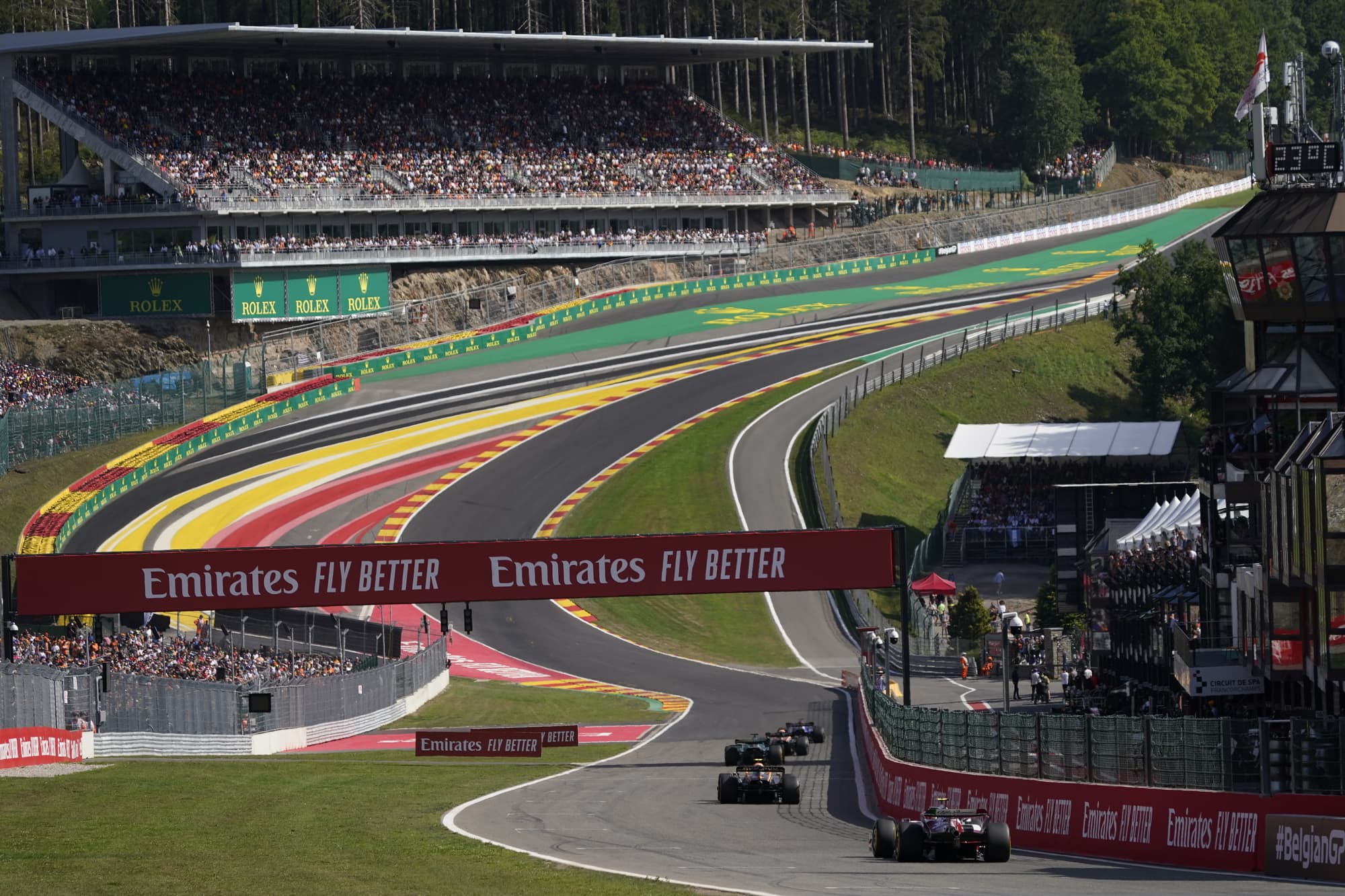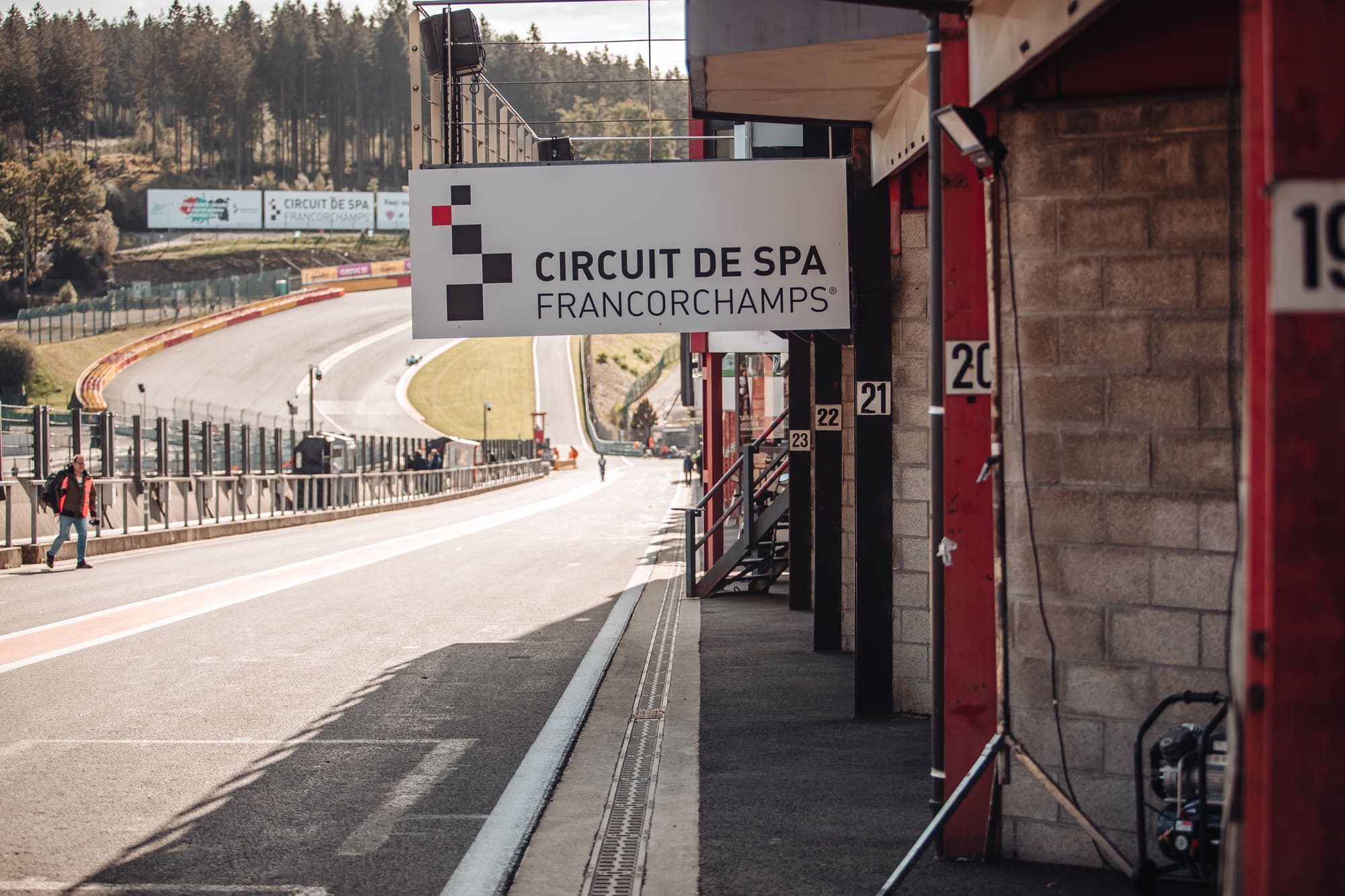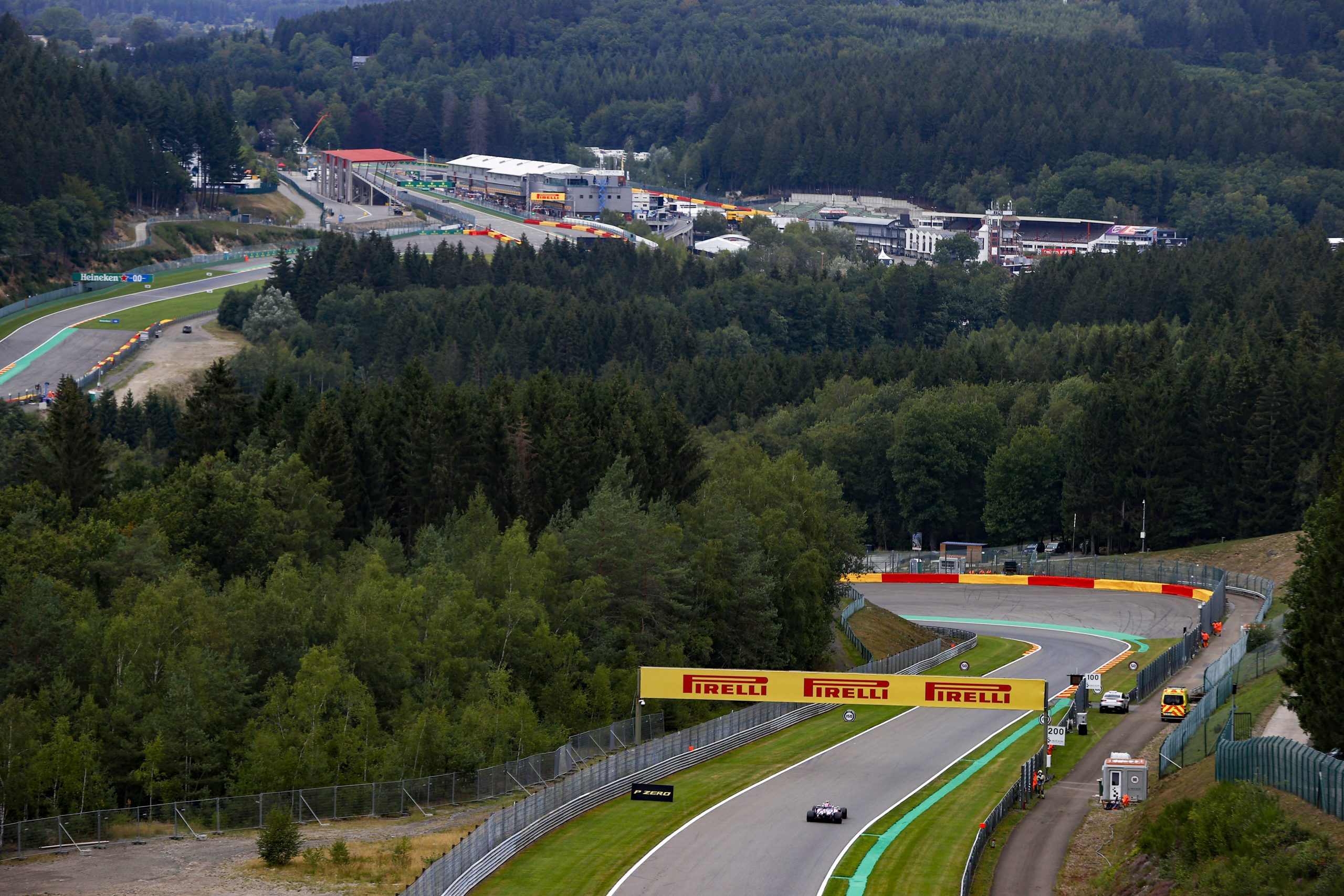Circuit de Spa-Francorchamps
The Circuit de Spa-Francorchamps, more commonly known as Spa, is a venerable motor-racing circuit woven into the fabric of Belgium’s motorsports tradition. Situated in the Stavelot municipality of Wallonia, it spans a length of 7.004 kilometers, making it one of the most challenging and longest tracks in racing. Its location in the scenic Ardennes forest contributes to the awe-inspiring backdrop against which drivers test their mettle, blending natural beauty with the adrenaline of high-speed competition.
Belgium’s Spa circuit stands as a testament to racing heritage, having first hosted a Grand Prix as far back as 1925. This track has evolved into a symbol of technical and physical demand in motorsports, embodying a mix of high-speed straights and challenging turns. Legendary for the Eau Rouge and Raidillon sequence, Spa pushes the boundaries of what is possible, both in car design and driver skill.
Renowned for its variable weather conditions, the Circuit de Spa-Francorchamps offers an unpredictable element that further cements its reputation among racers and enthusiasts alike. The notorious weather patterns of the Ardennes can change from glaring sunshine to pouring rain in a matter of minutes, compelling teams and drivers to exhibit exceptional adaptability and strategy during events. This unpredictability, paired with the track’s storied history and the rousing challenge it presents, solidifies the circuit’s status as a cornerstone in the world of Formula One and other racing series.
History and Development
The Circuit de Spa-Francorchamps has evolved significantly since its establishment. It stands today not only as an icon in the world of motorsports due to its rich history but also thanks to its continuous development to meet modern safety standards and the evolving demands of high-speed racing.
Origins and Founders
In 1920, the director of the Belgian newspaper “La Meuse,” Jules de Thier, and race car driver Henri Langlois van Ophem set out to create a suitable track for the revival of auto racing in the post-World War I era. They were joined by Joseph de Crawhez, the burgomaster, in their efforts. The trio selected the public roads connecting Francorchamps, Malmedy, and Stavelot to form the triangular layout of the track. The course was distinctive for its minimal number of tight turns and an abundance of high-speed stretches, characteristics thought at the time to epitomize premier racing.
The Impact of World War II
Like many institutions, the Circuit de Spa-Francorchamps was not unaffected by the upheavals of World War II. As the circuit is situated near the town of Spa, an area with historical significance from both World Wars, it experienced direct and indirect effects. The conflict brought a temporary halting of racing activities and inevitably led to changes in territory and governance that would impact the surrounding community and, by extension, the circuit itself.
Modern Improvements
Following World War II, the circuit underwent several modifications to address safety concerns and to keep pace with the evolution of motor racing. A significant redesign in 1979 saw the original 14.1 km track shortened to 6.947 km, marking a transition from a purely public road circuit to a permanent racing facility. The introduction of permanent facilities corresponded with a broader shift in racing culture, which included developments like the prohibition of tobacco advertising in sports. The circuit as it stands now is FIA Grade 1 certified and plays host to numerous high-stakes international racing events, including Formula One’s Belgian Grand Prix.
Track Overview
The Circuit de Spa-Francorchamps is a renowned motorsport race track located in Belgium, known for its challenging layout that combines high-speed straights and fast corners with significant elevation changes. It has evolved from a dangerous public road course to a modern, standalone circuit that maintains the thrill of high-velocity competition while offering improved safety.
Raidillon and Eau Rouge
Arguably the most emblematic section of the Spa circuit, Eau Rouge is a sharp uphill compression leading directly into Raidillon, a sweeping left-right-left combination. It requires skill and bravery, as drivers navigate this high-speed section with a blind summit, relying on downforce and momentum.
La Source Hairpin
After the starting straight, drivers encounter La Source, a tight hairpin corner. Notoriously slow compared to the rest of the track, this corner demands hard braking and offers a key overtaking opportunity during the race. Its immediate proximity to the pit exit adds to the strategic complexity.
Kemmel Straight
Following the adrenaline rush of Raidillon, competitors are thrust onto the Kemmel Straight, a long, high-speed section of the track that leads to the ‘Les Combes’ complex. It’s a crucial part of the circuit for drivers to gain speed advantages, often culminating in overtaking as they approach the following chicane.
Les Combes and Chicane
Les Combes is a sequence of corners, including a right-left chicane that navigates through Malmedy. It requires precise turning points and throttle control for the drivers, as mistakes here can lose valuable time or lead to overtaking by competitors.
Blanchimont and Bus Stop Chicane
Approaching the end of the lap, Blanchimont is a fast corner that tests the boundaries of a car’s grip before drivers approach the celebrated Bus Stop Chicane. This chicane constitutes a sharp left-right sequence that can make or break a lap time and further delivers another potential overtaking opportunity leading onto the start/finish straight.

Major Races and Events
The Circuit de Spa-Francorchamps is a focal point for premier racing events, hosting an array of high-profile competitions that showcase the pinnacle of motorsports.
Formula 1 Belgian Grand Prix
The Formula 1 Belgian Grand Prix is a flagship event at Spa-Francorchamps, part of the Formula One calendar. Known for its challenging layout, it presents drivers with a mix of high-speed corners and elevation changes. The track’s signature turn, Eau Rouge and Raidillon complex, is often cited as one of the most exhilarating sections in the Formula One circuit.
24 Hours of Spa
As an integral part of the GT racing calendar, the 24 Hours of Spa is recognized as one of the most prestigious endurance races. Typically held annually in late July or early August, it features a variety of touring cars and is part of the GT World Challenge Europe.
World Endurance Championship
The World Endurance Championship (WEC) has chosen Spa-Francorchamps as a crucial venue for its series of endurance races. The track accommodates high-speed prototypes and GT cars, testing the limits of technology and driver endurance in extensive racing events.
FIA Formula 3 Championship
The FIA Formula 3 Championship includes Spa-Francorchamps as an important part of its racing season. This event is crucial for young drivers seeking to advance in the world of single-seater motorsport and is known for close wheel-to-wheel racing.
Safety Considerations
The Circuit de Spa-Francorchamps has undergone several transformations to enhance safety for drivers and spectators. These improvements address factors such as track visibility and adaptability to wet conditions.
Circuit Evolution
The track has seen significant changes since its inception, primarily to improve safety. Initially comprising public roads, the circuit was infamous for its high-speed demands and lack of runoff areas. Fatalities and severe accidents prompted a move toward enhanced safety. The track was redesigned in the late 20th century, shortening its length and introducing runoff areas to reduce the consequences of driver errors or mechanical failures, especially in wet conditions where visibility and car control can significantly deteriorate.
- Track Changes:
- Original Layout: Over 14 km, largely on public roads
- Current Layout: Approximately 7 km, with permanent racing tarmac and advanced runoff areas
Modern Safety Measures
In recent years, Circuit de Spa-Francorchamps has invested substantially in modern safety measures. These include high-tech barriers, improved runoff areas, and sophisticated track drainage systems to manage the often challenging wet conditions of the region. The latter is particularly important given the circuit’s notorious microclimate where sudden rain can dramatically affect visibility and grip levels.
- Key Safety Upgrades:
- Barriers: Installation of SAFER (Steel and Foam Energy Reduction) barriers
- Runoff Areas: Expansion and surfacing to allow for better deceleration
- Drainage: Upgraded systems to reduce water on track during rain
These changes reflect the circuit’s commitment to maintaining its high-speed character while ensuring it meets or exceeds current international safety standards.

Technical Aspects
Circuit de Spa-Francorchamps is renowned for its demanding layout, which requires top-level precision and performance from both cars and drivers, particularly in Formula 1 racing events. The track’s intricate configurations play a critical role in the challenges presented during free practice, qualifying, and race conditions.
Track Specifications
- Distance: The circuit boasts a total length of 7.004 km (4.352 mi), making it one of the longest on the Formula 1 calendar.
- Lap Record: The official lap record for the current track layout is held by Valtteri Bottas, set at 1:46.286 during a Formula 1 race in 2018.
- Turns: Drivers navigate through 19 challenging corners, each requiring precise braking and steering input.
The track is characterized by its high-speed sectors, technical slow corners, and notable elevation changes. This combination requires vehicles to be set up with a well-balanced aerodynamic package to achieve optimal performance across the different sections.
Racing Conditions
- Race Stages: The racing events at Spa-Francorchamps typically include three main stages: free practice, qualifying, and the race itself, which may consist of race 1, race 2, and race 3 for different series.
- Weather: Weather conditions can be significantly variable, often changing rapidly during a race, which adds to the track’s challenge as teams need to adapt their strategy and car setup accordingly.
During free practice sessions, teams study the track’s behavior under different conditions and refine their car settings. Qualifying demands impeccable precision and timing, leveraging the track’s long straights and fast corners. Finally, the races test the driver’s consistency and the car’s reliability throughout the full distance under high-stakes conditions.
To sum up the racing conditions section: Spa’s unpredictable weather and grueling layout demand a high level of adaptability from the teams and drivers. The importance of car setup and strategy can be the difference between triumph and shortcomings during the intense competition stages.
Spectator Information
The Circuit de Spa-Francorchamps offers a rich racing heritage matched with a selection of viewing areas and facilities that cater to avid motorsports fans, ensuring an immersive spectator experience at the heart of the Ardennes forest.
Viewing Areas
- Gold 1: Positioned close to the pit lane entrance, this grandstand provides an excellent view of the podium celebrations, the start/finish straight, and the pit lane activities. It is a premium location for those looking to capture the essence of the race.
- Gold 8 and 9: Both these areas offer views of the start/finish straight, making them strategic points to witness the thrill of the race commencement.
Facilities and Capacity
- Capacity: The circuit’s spectator capacity is relatively modest compared to other Formula 1 tracks, with most grandstands sited along the pit straight and near the iconic Eau Rouge corner. This setup ensures a closer and more personal viewing experience.
- Facilities: Continuous upgrades to safety and amenities, such as extended run-off areas and re-profiled turns, have modernized the track. These improvements enhance the safety and enjoyment for spectators without compromising the circuit’s historic and challenging nature.
Cultural Significance
The Circuit de Spa-Francorchamps holds a pivotal role in both the local community of Stavelot and the broader domain of motor racing heritage. It stands as more than a racing venue; it is an emblematic site of cultural gathering and automotive history.
Local Community
The impact of the circuit on Stavelot and its environs is significant. It serves as a hub for cultural activities and economic stimulation. Annually, spectators from around the globe descend upon the region, fostering a diverse atmosphere and supporting local businesses. Events such as the Formula One Belgian Grand Prix and Spa 24 Hours not only enhance the cultural fabric of the area but also sustain the regional economy through tourism and related services.
Motor Racing Heritage
Established after World War I to renew the La Meuse Cup, the circuit swiftly became a cornerstone of car racing. Its complex layout has tested the prowess of countless racers, thereby cultivating a rich motor racing heritage. Notably, the circuit hosted its first motorcycle race in 1922, followed by the inaugural 24 hours of Francorchamps in 1924, a mere year after its counterpart, the 24 Hours of Le Mans. Recognized globally, the Circuit of Spa-Francorchamps stands as a living museum of racing history, a testament to the evolution of automotive sports.
Circuit de Spa-Francorchamps – Frequently Asked Questions
The following subsections address common queries regarding the Circuit de Spa-Francorchamps.
Why is Belgium F1 called Spa?
The Belgium F1 is colloquially called Spa because it takes place at the Circuit de Spa-Francorchamps. Spa refers to the nearby town of Spa, known for its mineral-rich thermal waters.
Which circuit is Spa?
Spa is the short name for the Circuit de Spa-Francorchamps, a world-famous motorsport race track located in Stavelot, Belgium.
What is the elevation change in the Spa circuit?
The Circuit de Spa-Francorchamps features significant elevation changes, with the total variation being around 102 meters. The most notable elevation change occurs at the Eau Rouge/Raidillon complex.
Why is Spa-Francorchamps so popular?
Spa-Francorchamps is popular due to its rich history, challenging undulating layout, and iconic corners like Eau Rouge and Raidillon, which test both the skill and courage of drivers.
What is the current longest F1 track?
As of the last update, the Circuit de Spa-Francorchamps is not the longest Formula One track. The Jeddah Corniche Circuit in Saudi Arabia holds the record for being the longest F1 track at present.
Where can I buy tickets to the Belgian Grand Prix?
Tickets for the Belgian Grand Prix can be purchased through the official Formula One website or the Circuit de Spa-Francorchamps official website. Visitors are advised to buy tickets in advance due to high demand.

